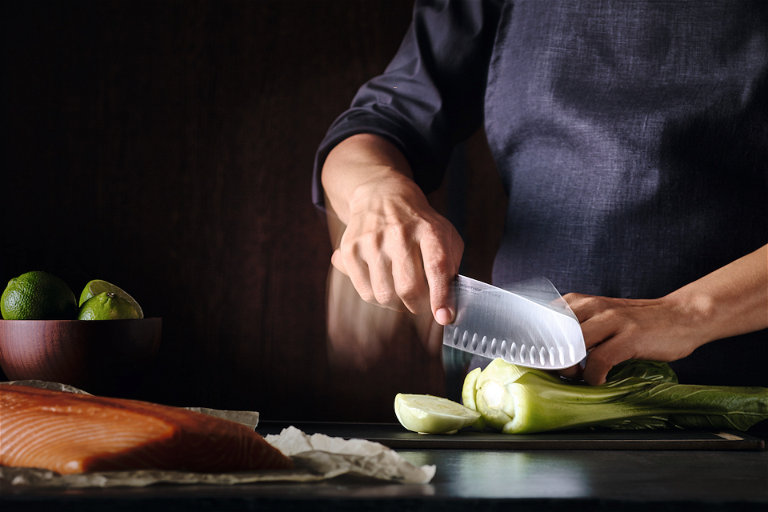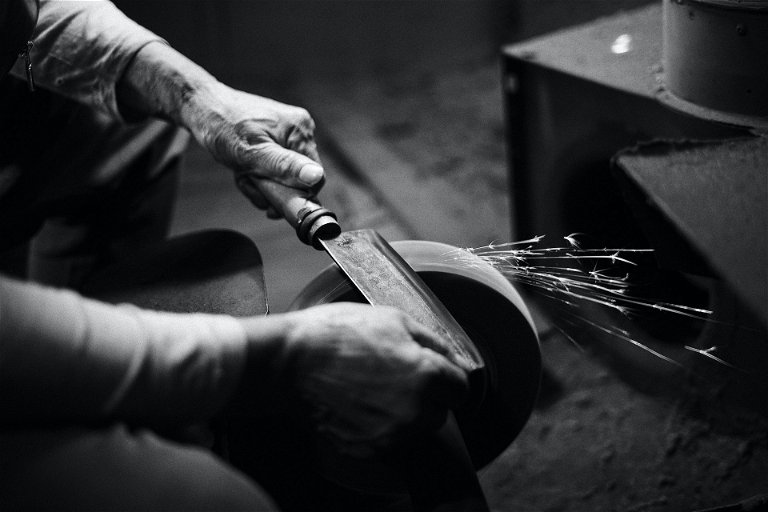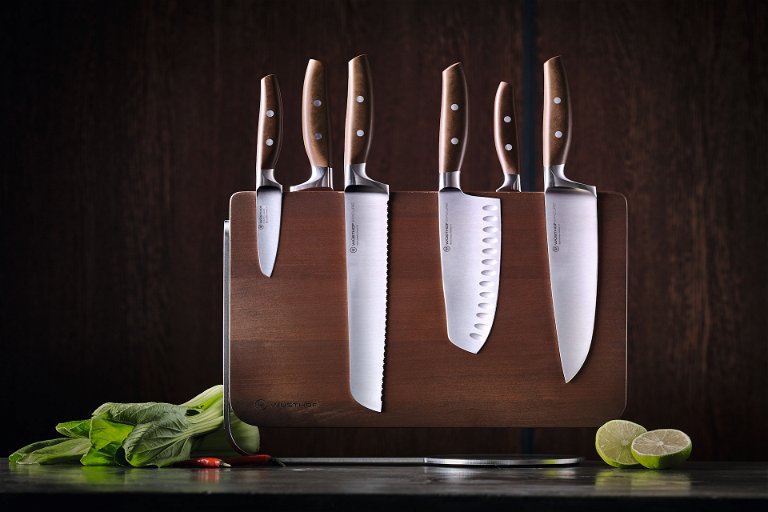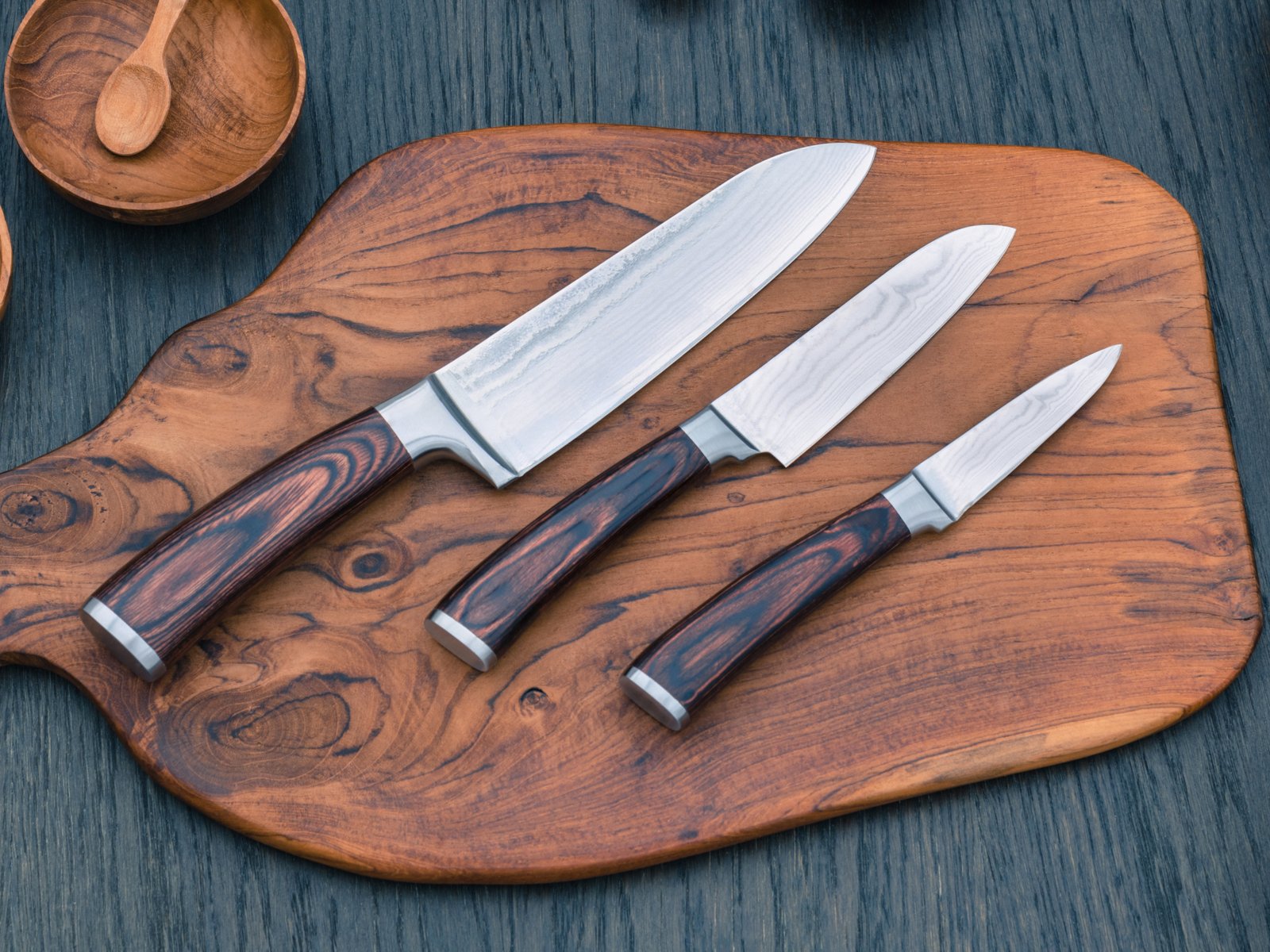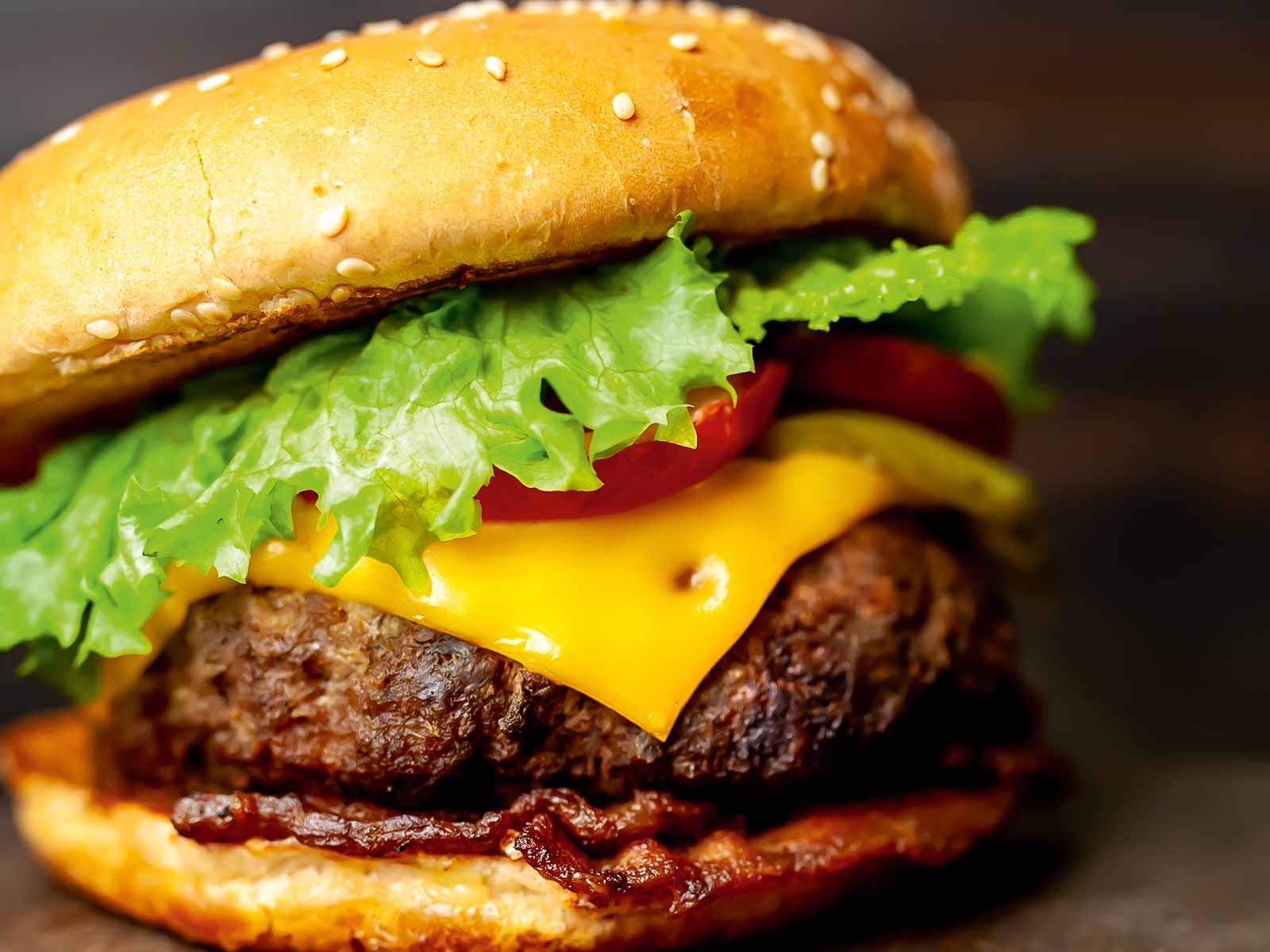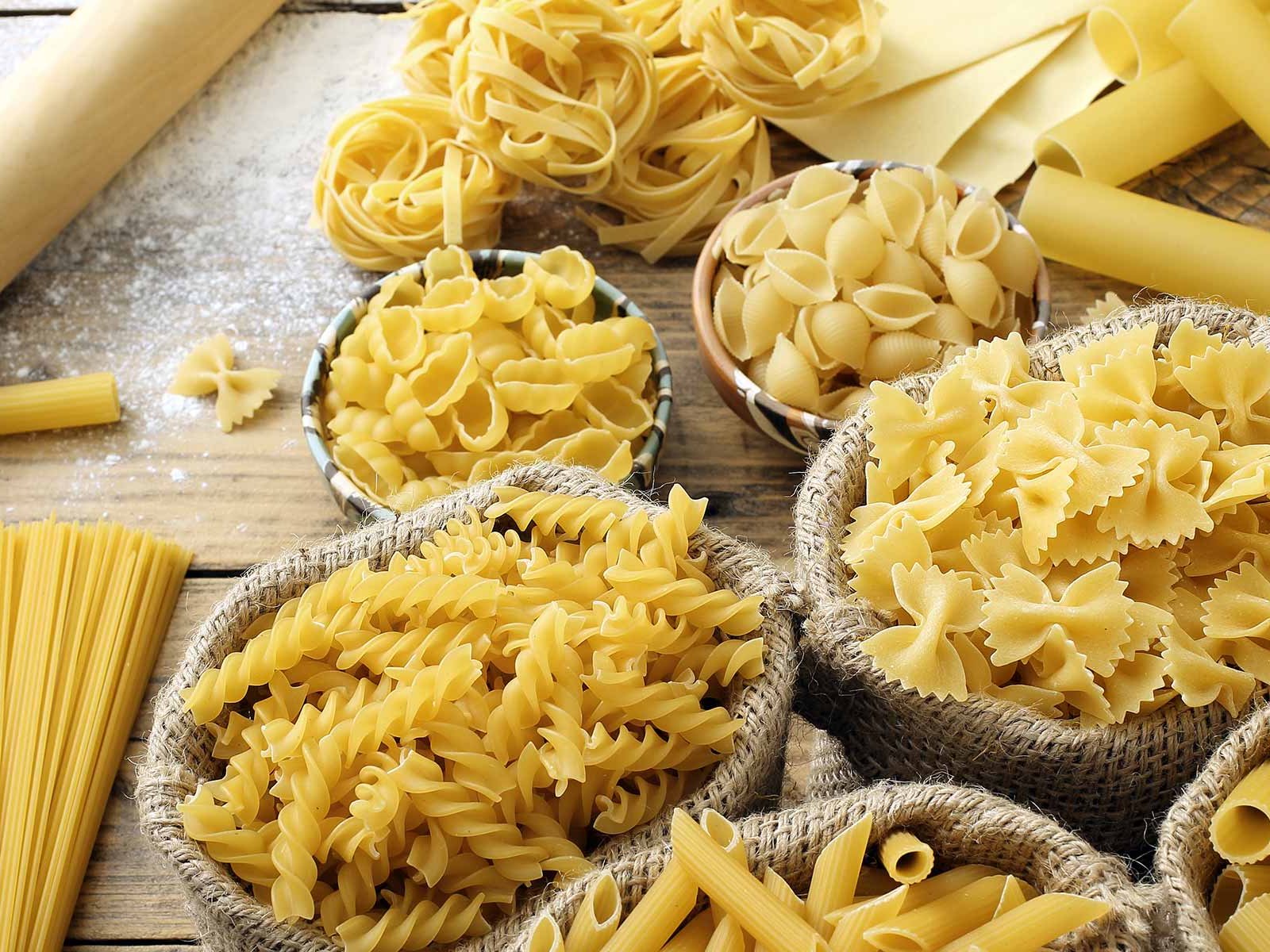How to Buy a Kitchen Knife
No self-respecting cook would work without a good knife – and our incisive guide has everything you need to know about the world of steel blades.
That’s not a knife,” goes the immortal Crocodile Dundee scene. You don’t have to be a New York mugger to have been on the receiving end of this pointed quote. As anyone who has ever struggled to slice an onion with a hopelessly blunt utensil knows, a bad knife is a cook’s nightmare. But what makes a good knife? Humans have pondered this question for centuries. Craftspeople from Germany to Japan have built upon generations of sword-making expertise, entire lives dedicated to ensuring their steel serves its user impeccably, whether on the battlefield, during hunting or, more likely today, in the kitchen.
Just like the pros
Until recently, the finest, most expensive knives tended to be the preserve of professional chefs. But in 2020, when the world’s foodies suddenly found their favourite restaurants closed and extra time on their hands, many felt the urge to upgrade their tools. That is certainly the experience of Vickie Shannon, marketing director of Gastronomy Plus, which includes both the online shop kitchenknives.co.uk and physical London base The Sharpening Shed. “In lockdown the more expensive knives really surged for us,” she reports. “Before that we were mostly selling them to professionals.”
It may boost the ego to wield the same kitchen knife as your favourite chef, but it is unlikely to enhance your cooking if you do not know how to use or care for it properly. “Chefs start every shift by sharpening their knives,” Shannon says. They are also unlikely to throw them in the dishwasher or keep them clattering around in a drawer. The Sharpening Shed, as its name suggests, offers a knife sharpening service and hopes to resume courses teaching how to use and look after knives.
Nuanced choices
Those who have decided they possess the skills and inclination to commit to a seriously high-end knife then need to navigate the bewildering array of options available. The first, most basic criterion is whether to choose a knife made from a single piece of steel or with a bolted-on handle. After that, the shopping process becomes rather more nuanced. Lively debate rumbles on amongst knife enthusiasts about whether European or Japanese steel is superior. Then there is the decision over whether your knife should be of stainless, carbon or even Damascus steel – and that is before you have even thought about the handle or how many knives you need.
Which knives do you need?
Shannon suggests that for a home cook, “unless they are into something really specific like sushi or hunting and fishing, I would say they need about five knives: a bread knife, carving knife, paring knife and then a couple of utility knives for things like vegetables.” While most brands helpfully offer ready-made sets, Shannon notes a rise in the number of people who prefer a more considered approach. “We are seeing more customers buying loose knives instead of sets,” she reports. “They are happy to pick, choose and curate their own set.”
As for brand or material choice, these often come down as much to personal preference as any definitive criteria of “the best.” Japanese knives are famed for lightness and precision, ideal for those perfect slivers of sashimi. However, they also tend to be more brittle than their sturdier western counterparts, requiring diligent care and sharpening. Do not even think about using them on a glass surface protector either; you will need to stick religiously to a wooden chopping board. These considerations clearly split top end customers equally: Shannon points to almost identical sales of leading Japanese knife producer Global and the highly regarded German brand Wüsthof.
What kind of steel?
For all their differences, both brands make their knives with stainless steel. Yet delve into the online world of knife enthusiasts and it is easy to be left with the impression that a truly dedicated chef chooses carbon steel. Harder, sharper and staining into a beautiful patina over time, carbon steel will always have its devotees, but others find those attributes come at too high a cost. Stainless steel will not rust or react unpleasantly with onions; it is less brittle; nor does it demand the rigorous cleaning, drying and oiling that carbon steel aficionados embrace with such reverence. There seems to be a consensus that, if you are not planning to develop an obsessively emotional relationship with your knife, stainless steel is the most pragmatic path.
Bespoke knives
As with so many other objects where craftsmanship must combine flawless technical performance with aesthetic appeal, the ultimate satisfaction comes from a bespoke approach. Laurie Timpson set out to offer just that when he founded Savernake Knives back in 2016. The company promises over 44,000 customisation options, and can even incorporate clients’ own materials into the design, like a favourite fabric or children’s artwork. The process is intensely collaborative: the client is involved in every detail from initial sketches through to the production of a 3D model, acrylic mock-up and finally steel prototype.
Myths and hards facts
Savernake may not boast the centuries of heritage of other knife makers, but Timpson cites the theory, popularised by Malcolm Gladwell in his book The Outliers, that it takes 10,000 hours of practice in any given field to achieve real expertise. “Well, this is all I’ve done for six years now,” he says, before noting disarmingly, “it’s not rocket science.” Indeed, Timpson has plenty of colourful words to describe what he views as “the mystique and marketing spent on obfuscation” in his trade. A particular gripe is “turning a bug into a feature.” For example, he claims, “some people say the steel should not be as hard, but that’s a weakness.”
Timpson insists the basic premise of his craft is relatively simple. “For a good quality knife you need good quality steel, hardened and heat treated for a good blade that is balanced,” he says. “To get that into one knife consistently requires more time than most mass market companies have the taste for.” By good quality steel, Timpson clarifies, “you’ve got to get to 60 Rockwell C hardness,” a grade he maintains is impossible with cheaper steel used by some firms – the Rockwell scale measures the hardness of cutting tools. He identifies cutting corners on heat treatment as another time-saving temptation for brands seeking to reduce cost at the expense of quality.
Handling it
Of course, knives are not just about the blade: there is the handle to consider too. The first major decision is between wood, which requires care, or a lower maintenance synthetic material such as Corian which also introduces scope for a more colourful, contemporary look. Although this sort of aesthetic consideration is far more subjective, Timpson stresses its importance for truly happy customers. “If they like how it looks they’ll look after it better,” he explains.
In short, any quest for the “best” kitchen knife is a mirage. The successful search process involves as much analysis of one’s own character and capabilities as those of the knife. As Shannon so pointedly remarks, “knives are only as good as the person using them.”
